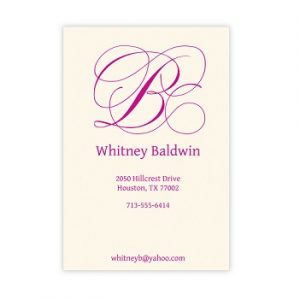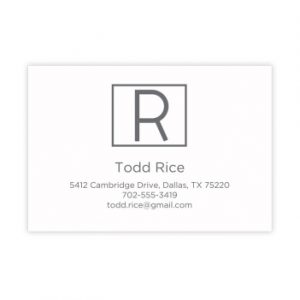Calling Cards – A Lost Art
In the days before email, even telephones, how did people socialize? In-person visits were the order of the day for people in the upper and middle class from the 1700s through the early 1900s. Calling cards played a big role in enabling people to get out and “see” as many people as possible in a morning. Calling cards, also called visiting cards, are small pieces of card stock featuring a person’s full name, centered on the front. Unlike today’s business cards, no other identifying or contact information was printed on the calling card. Sometimes it was just enough to drop off your card with a servant at the front door and move on to the next home. It was the equivalent of pinging someone or dropping a quick “hi” via text.
Calling Card Etiquette
According to Nancy Sharon Collins, author of The Complete Engraver: Monograms, Crests, Ciphers, Seals and The Etiquette of Social Stationery, people used an elaborate set of customs to signify meaning.
On the morning of the visit, people personalized their cards with a fountain pen in various ways, according to Collins. You could add a quick note to be extra friendly. Add an address if you wished your friend to return your visit. Or you might even cross out the printed name and sign your nick name underneath.
And the fun really began with corner folding. “Specific coded meaning could be conveyed through the folding of corners,” writes Collins. If you sent your servant to deliver the card, he or she would deliver it plain, without any folded corners. When you visited in person, you would fold the upper right-hand corner. If you wanted to send congratulations or well wishes, you’d fold the upper left-hand corner. You would have folded the lower left-hand corner if you wanted to send condolences, . When you wanted to say good-bye at the end of the season, you would write P.P.C.. It is short for pour prendre congé, french for “for leave-taking.”
Today, our calling cards might contain not only a name, but an address, phone number, email, even social media accounts. They are larger than a business card, typically 2.4″ x 3.5″. They are perfect for a young mom who visits the playground with her toddler to meet other moms. A new neighbor who wants to get to know other neighbors on the block. They are wonderful for anyone who loves tradition and the people around them. See our collection here.





Leave a comment